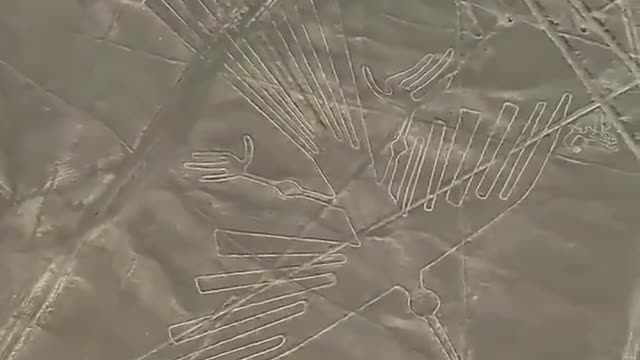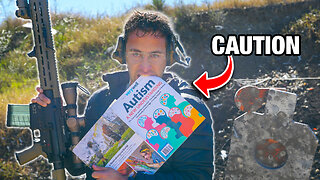Premium Only Content

A complex of drawings that attracts many tourists and riddle seekers
The complex of drawings, which attracts many tourists and seekers of mysteries, is located 450 kilometers from the capital of Peru, Lima. Its total territory stretches for more than 50 kilometers from north to south and 5-7 kilometers from west to east. Thus, mysterious lines, giant geometric figures and drawings (geoglyphs) cover the surface of the desert with an area of approximately 500 square kilometers. At the moment, about 30 drawings are known (bird, monkey, spider, flowers, etc.); also about 13 thousand lines and stripes and about 700 geometric figures (primarily triangles and trapezoids, as well as about a hundred spirals). Since the images reach several hundred meters in length and are difficult to recognize from the ground, they were officially discovered only in modern times, when flying over the plateau in the first half of the 20th century. In 1994, they were included in the UNESCO World Heritage List. These drawings were discovered by accident, thanks to aviation, since they can only be seen from an airplane or from a high altitude. The first to see giant geometric figures from an airplane in 1920 was the American explorer Paul Kosok. The scientist peered in amazement at this incredible kaleidoscope of trapezoids, triangles and spirals that dotted the plateau over a vast territory. In addition, there were images of over 100 known plants and animals, as well as a scattering of incomprehensible, unrelated straight lines.
These lines especially struck the scientist. They cut through the desert in all directions without any apparent order, were absolutely straight and ran beyond the horizon, completely ignoring the unevenness of the terrain - through the hills and valleys.
The 60 km long sandy plain of Nazca is located 400 km south of the Peruvian capital Lima, between the cities of Nazca and Palpa. In these places, the earth does not see moisture for years. Drops of rare rain, falling on a hot rocky surface, immediately evaporate. This lifeless space is an ideal place for incorruptible burials. Later, studying all the drawings on the spot, Paul Kosok saw that the technology for their execution was surprisingly simple. It was only necessary to move the stones and the turf beneath them, exposing the soft earth, and lay them in a row.
Friends, if you liked the video, click on +, add comments and optionally subscribe to promote the channel !!!!!!
-
 1:04
1:04
WCPO
4 years agoMaui: Too many tourists
8 -
 21:39
21:39
Nikko Ortiz
4 days agoI Take A North Korean Shooting
62K9 -
 23:01
23:01
GritsGG
15 hours agoWarzone Solo Dubular! Last Night Time Solo???
1.7K -
 22:47
22:47
The Pascal Show
12 hours agoTHEY’RE HIDING EVIDENCE?! Candace Owens EXPOSES Foreign Connection In Charlie Kirk Shooting
2.52K9 -
 LIVE
LIVE
Lofi Girl
3 years agolofi hip hop radio 📚 - beats to relax/study to
142 watching -

FreshandFit
12 hours agoLas Vegas Takeover!
181K15 -
 2:19:29
2:19:29
Badlands Media
12 hours agoDevolution Power Hour Ep. 404
70.7K36 -
 6:02:58
6:02:58
Drew Hernandez
1 day agoGOP COOKED INTO DENIAL & 12 ISRAELI-LINKED PHONES DETECTED AT UVU DAY OF CK EXECUTION?
46.1K24 -
 2:46:08
2:46:08
TimcastIRL
8 hours agoFAA To STOP Flights Over Shutdown, May CLOSE Airspace, Thanksgiving Travel APOCALYPSE | Timcast IRL
193K113 -
 1:56:20
1:56:20
Tucker Carlson
8 hours agoIt’s Time to Decide: America First or Lindsey Graham’s Psychosexual Death Cult?
108K406